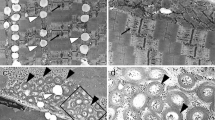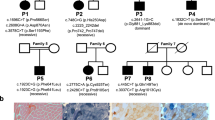Abstract.
Deficiencies in cytochrome oxidase (COX), the terminal enzyme of the mitochondrial respiratory chain, are relatively rare but most often lethal. The underlying causes are beginning to be elucidated, and most mutations are thought to affect the function of proteins involved in assembling the holoenzyme. COX17 is such an assembly protein and is thought to recruit copper to mitochondria for incorporation into the COX apoenzyme. Here we present the gene structure, the expression, and chromosomal localization for COX17, a candidate gene for COX deficiency. The COX17 gene spans approximately 8 kb of human genomic DNA and encodes a transcript of approximately 450 bp that is expressed in all tissues tested. Although the COX17 gene was previously mapped to chromosome 13q14-21, our results suggest that a COX17 pseudogene maps to this region. The pseudogene contains several nucleotide changes, including one that would result in an altered amino acid in the putative copper binding domain. We have localized the gene encoding the COX17 protein to the long arm of chromosome 3 by radiation hybrid mapping. Deciphering of the COX17 genomic structure will allow this gene to be assessed for mutations in COX deficient patients.
Similar content being viewed by others
Author information
Authors and Affiliations
Additional information
Electronic Publication
Rights and permissions
About this article
Cite this article
Punter, F., Adams, D. & Glerum, D. Characterization and localization of human COX17, a gene involved in mitochondrial copper transport. Hum Genet 107, 69–74 (2000). https://doi.org/10.1007/s004390000339
Received:
Accepted:
Issue Date:
DOI: https://doi.org/10.1007/s004390000339




